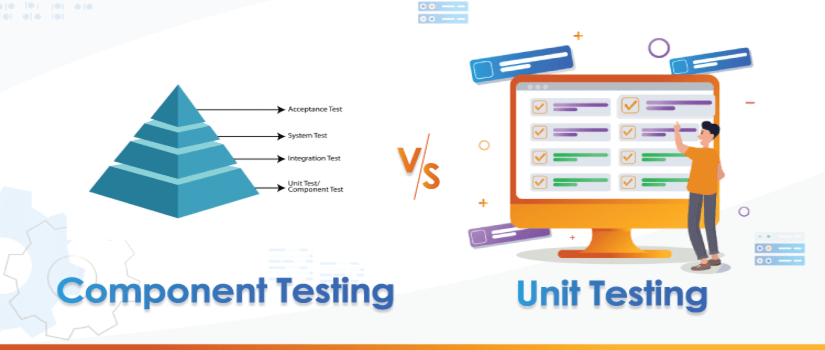Image optimization means reducing the image website to get the best possible size without losing any visible quality. Optimized images should have just the right dimensions, aspect ratio, and resolution to fit your website. There are many ways to achieve image optimization and there are several tools you can use to do that.
More than 70 percent of a website is visuals. Most of the website weight consists of images. Reducing the image size can greatly reduce the loading times and overall performance of the site. If we reduce the size of the image without losing its quality, we can make the user experience far better. In this article, we will explore the advantages of image optimization and how image processing can help in improving website performance.
Why Optimizing Media On a Website Is Important
Media optimization is essential for your website for a variety of reasons. If your website doesn’t load within 2 to 4 seconds, a visitor is more likely to close the tab. This not only hurts your conversion rates but is also bad for your website ratings. Let us explore in detail why media optimization is so important for your website.
Page Loading Speed
The page loading speed depends on many factors. Your website hosting servers, your layout choice, and the overall design contribute to how fast your website can load. If you can optimize 70 percent of your website, you can improve its page loading times by a great margin. Since most of the media is images, you will need image processing tools for that.
When a website loads faster, it follows that users will have a better experience with your website which means that there are more chances of conversion. If you want to know your page loading speeds, the best tool you can use is Google page insights. Google page insight provides detailed data on your page loading speeds and how well your site is ranking. It provides insights into both mobile and desktop loading times so you can use this data to find a balance between both versions of your website.
Increases Your Rankings
Load speed is a major indicator that a site is performing well. Google has a thing for fast-loading websites. It will only rank those sites on the top which loads fast and will penalize those which don’t. Google updated its algorithm in 2010 which focused more on customer experience thereby increasing the overall search quality. While this did increase the user experience, it hurt the ranking of many websites. It is, therefore, very important for digital marketers to prioritize media optimization.
Boost Conversions
Fast load speeds follow greater conversion rates. The more optimized your website is the more chances there are of increasing conversions by retaining the users. Remember that fast load speeds directly impact the conversions and SEO ranking. Almost 79 percent of users who are affected by slow loading speeds don’t give any sales.
User Satisfaction
Happy customers mean an increase in sales. Customer satisfaction is directly linked to user engagement. Using image processing to optimize your websites allows you to load your Web Pages faster which results in a more contented user base. An overall better user experience combined with increased ratings results in lesser bounce rates, faster page load speeds, and a highly Optimized Website.
Why Use Image Processing to Optimize Media
Convert Your Images to New Formats
The most common image containers used are PNG and JPG. While JPG is almost always lossy when compressed, PNG tends to retain a considerable quality. But that comes at a price. The size of PNG images is very large and even when you compress them, they still form a major part of your website weight. Thankfully, using image processing, you can convert your image to the newest format. WebP is the most advanced image format by Google that can reduce the size up to 77 percent and supports both lossy and lossless compression. This format is extremely light for your website and has a lot of potential for faster loading times. With proper optimization techniques, you can compress the images up to 26 percent without losing any quality.
Get The Most Out Of Your Site Through WebP Caching
Another advantage of using image processing is WebP caching. If you are using services like KeyCDN, you can take advantage of this feature. Through the use of WebP caching, you can cache each image separately. Enabling this feature can yield up to 80 percent better image compression. As you increase the size of your assets, you will eventually have your site performing well overall. Combine Image processing with WebP caching to get the most out of it.
Image Scaling
When using Cascading style scripting or Javascript in your HTML, you can manipulate a single image to perform different functions. This can degrade the quality and overall performance of your website. Through the use of image processing software, you can scale images in real-time. If you have an active image processing service, you can benefit from fast loading times as the images are delivered from the server that is closest to the user. Additionally, since the images are scaled in real-time, the site can fit all sizes and is good for all resolutions. All of this is done in a fraction of a second to ensure quality delivery.
Minimal Load On Servers
A content delivery network with image processing ensures that most of the work is loaded off of your servers. If images are processed on servers, it will naturally impact the website performance because apart from the usual queries, the servers are dealing with requests that require the transfer of heavy image data. Image processing allows your servers to relax, making sure that only necessary data is processed on the server while more dynamic data is managed by the CDN. When you have image processing enabled with CDN, the media is offloaded which results in less latency giving a snappy website performance. This gives your users a better experience while maintaining minimal load on data servers.
Use Of Image Processing In Dynamic Images
When you launch a website, at first glance, everything is working rock solid. It is only after some time that you start noticing the performance downgrade. That is because over time you eventually add more features that decrease the performance. Even if you use caching you don’t see a noticeable improvement. There are two types of media: videos and images. Images can be static or dynamic. Most of an interactive website is made of dynamic images. The static images cannot be manipulated by the users and thus you can create a simple CSS sprite and use them in different places. However, dynamic images can be changed by users. Every time a user adds or removes an image, the sprite needs to be updated. Here is where image processing comes in. Image processing works on complex algorithms that detect the changes in images and then load the relevant objects from the database. It can also compress and merge images in real-time, thereby reducing the server load manifolds.
Better Compression
Ultimately, using image compression will result in better compression. Since image processing compresses the images in real-time, you can set up image processing for a variety of tasks and set the compression levels for adjusting different parameters. This means that regardless of what device users are using, they will always get just the right image data without any reduction in quality or speed. Parameters like setting up the aspect ratio, width, height, cropping, trimming, fill in, and switching to full-screen mode can all be performed in seconds with image processing without impacting the speed or quality.
Conclusion
Images are essential for an attractive and interactive website. While they are a great tool for keeping the users engaged, they can take a heavy chunk out of your servers. If all the processing is allowed on the server-side, the website eventually slows down and hurts the user experience and ultimately your conversions.
Image processing is a way to increase load times by offloading most of the workload from the servers that require the processing of image data through the use of many different techniques. With image processing correctly in place coupled with the CDN and WebP caching, you can continue to generate and post high-quality content without having to worry about the slowdowns of your website.
Soft Tech has a team pool of high-end designers and back-end developers having several years of web design and development experience. Please feel free to Contact us for your IT needs.











